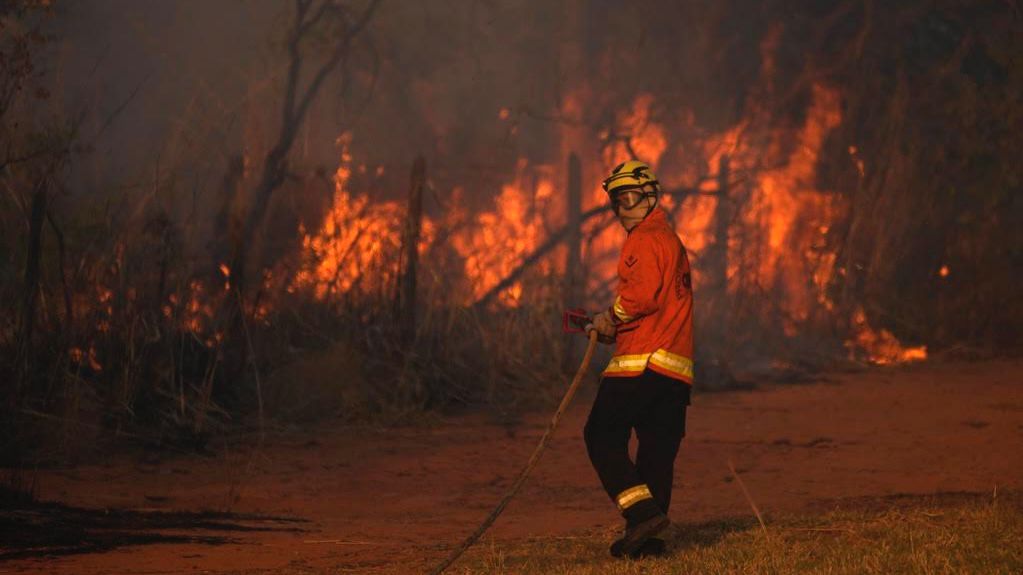Deforestation rates are increasing in the tropics, decreasing in South America
Agriculture and wildfires contribute to forest loss The World Resources Institute (WRI) has reported that in 2023, deforestation rates increased in some areas, but were offset by increases in other countries. Brazil lost 36% less primary forest in 20th, its lowest level since 2015, and Colombia saw its primary forest loss cut in half. However, the tropics increased their primary forest losses, with Bolivia, Laos and Nicaragua losing 9.1 million acres of forest in the same year, the equivalent of losing 10 soccer fields per minute. The increase in forest loss was attributed to fires and agriculture, primarily soybeans, and Canada's forest loss broke records last year due to wildfires. Deforestation in the Democratic Republic of the Congo increased by 3%, a significant increase as the last remaining major tropical forest absorbs more carbon than it emits. The WRI's analysis also highlighted the need to learn from countries that have successfully slowed deforestation.

Diterbitkan : 4 minggu yang lalu oleh Susan Carpenter di dalam Environment
Some parts of the world saw dramatic decreases in deforestation in 2023, but the improvements were offset by increases in other countries, according to a new report from the World Resources Institute.
“The world took two steps forward, two steps back when it comes to this past year’s forest loss,” World Resources Institute Global Forest Watch Director Mikaela Weisse said in a statement. “We must learn from the countries that are successfully slowing deforestation.”
Brazil lost 36% less primary forest in 2023 – its lowest level since 2015. Brazil’s contribution to global primary forest loss fell from 43% in 2022 to 30% in 2023. The WRI attributed the dramatic improvement to President Luiz Inacio Lula da Silva’s leadership.
Colombia, which also experienced a change in leadership last year, saw its primary forest loss cut in half in 2023.
The tropics, however, increased their amount of primary forest loss. Bolivia, Laos and Nicaragua were among the countries that lost 9.1 million acres of forest in 2023 — the rough equivalent of losing 10 soccer fields per minute.
Bolivia’s forest loss increased 27% last year — its highest level on record. WRI attributed much of the loss to fires resulting from record hot weather and agriculture, primarily soybeans. The forest losses in Laos and Nicaragua were also mostly due to agricultural expansion.
Canada’s forest loss also broke records last year due to wildfires that burned 45.7 million acres. WRI said widespread drought and increased temperatures led to the fires that caused Canada to lose five times more forest last year compared with 2022.
Deforestation in the Democratic Republic of the Congo increased 3%. The WRI researchers said the increase is small but significant because the Congo Basin is the last remaining major tropical forest in the world that absorbs more carbon than it emits.
Leaders from 145 countries agreed at the COP26 climate conference in 2021 to bring deforestation to zero by 2030, but this year’s WRI analysis found the planet is far from meeting that goal.
Forest loss is responsible for 20% of global greenhouse gas emissions, according to the Environmental Defense Fund.
“This report appropriately challenges us to balance despair and hope at the same time,” Bezos Earth Fund President Dr. Andrew Steer said in a statement. “The alarmingly high rates of global deforestation remind us how badly off track we are in solving the climate and nature crises.”
For its annual analysis, the WRI uses annual tree cover loss data from the Global Land Analysis and Discovery Lab at the University of Maryland. The data tracks tree cover loss everywhere except Antarctica and the Arctic islands.
Topik: South America, ESG
